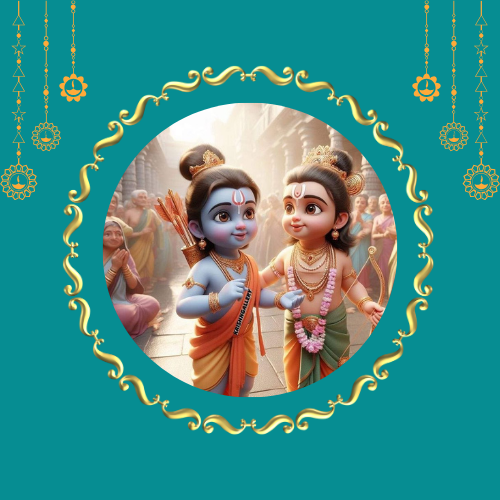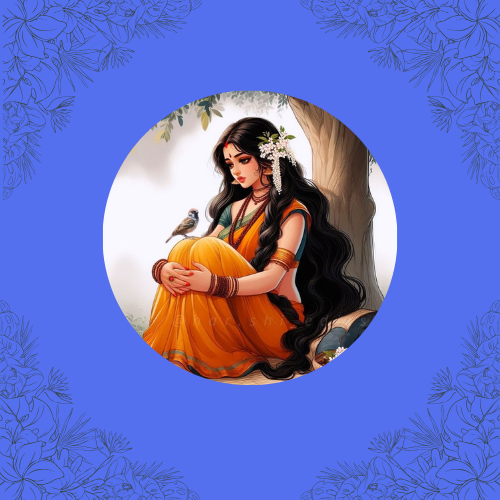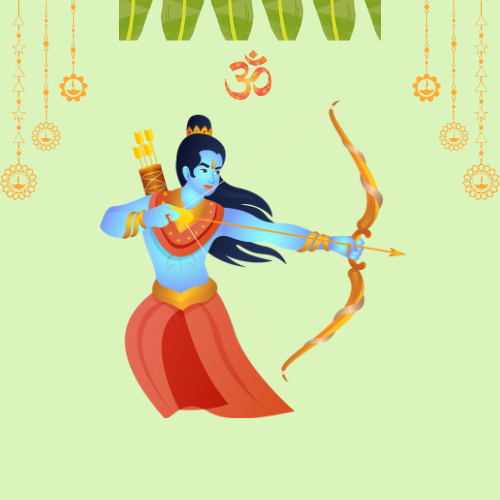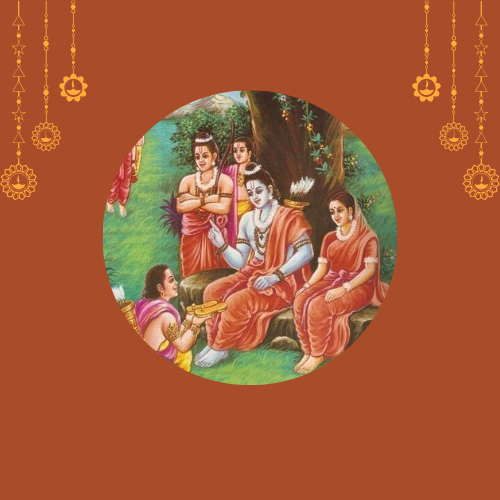Introduction
In the epic of Valmiki Ramayana, Lord Rama may be the central figure, but he is never alone in his journey. One of the most significant and inseparable companions in his life is his younger brother Lakshmana. Often described as Rama’s shadow, Lakshmana is the perfect example of unbreakable brotherly devotion, courage, and loyalty.
Let us explore the role of Lakshmana in Lord Rama’s life, and how his actions contributed to the larger mission of dharma and righteousness.
1. Lakshmana: Born to Serve and Protect Rama
Lakshmana, the son of King Dasharatha and Queen Sumitra, was the twin brother of Shatrughna. From his very birth, Lakshmana showed an extraordinary attachment to Rama. As a child, he wouldn’t eat or sleep unless Rama did.
🔹 Lesson: Lakshmana’s bond with Rama was not just of blood but of the soul—an eternal brotherly connection based on love and duty.
2. Accompanying Rama into Exile
When Rama was exiled to the forest for 14 years, Lakshmana voluntarily renounced royal comforts to join him, even though he was not bound by duty.
He said to Rama:
“Wherever you go, I shall follow. My only dharma is to serve you.”
Lakshmana left behind the palace, his wife Urmila, and royal privileges, showing that his loyalty was deeper than personal attachments.
🔹 Role: Lakshmana’s presence in the forest ensured Rama had a protector, companion, and emotional anchor throughout the exile.
3. The Protector of Sita and Rama
Lakshmana not only accompanied Rama but also took it upon himself to protect Sita, especially during times of danger.
- He built a hut in Panchavati, gathered food, and kept guard.
- When the golden deer (Maricha) deceived Sita and Rama was lured away, Lakshmana was reluctant to leave her side.
- Despite Sita’s insistence, he only left after drawing the Lakshman Rekha, a protective boundary that symbolizes his caution and foresight.
🔹 Lesson: His actions remind us of the importance of duty mixed with caution and self-control, especially in the service of loved ones.
4. Warrior and Hero in Battle
Lakshmana played a crucial role in the battle against Ravana, especially during the Lanka war.
- He defeated and killed Ravana’s powerful son, Indrajit (Meghnad), who had previously vanquished many devas.
- Even when injured by Indrajit’s divine weapon, Lakshmana was revived by Sanjivani herb, thanks to Hanuman.
- His valor and combat skill were critical in weakening the enemy forces and protecting Rama.
🔹 Role: Lakshmana was not just a brother but also Rama’s chief warrior and defense.
5. The Pain of Separation and the Ultimate Sacrifice
In the Uttarakanda (later section of Ramayana), Lakshmana faced a deeply painful situation. To protect Sage Durvasa’s dignity and Rama’s vow, he chose to accept death rather than break his brother’s word.
As per the story, when Durvasa arrived during a confidential meeting, Lakshmana had to choose between:
- Interrupting Rama (and breaking his promise), or
- Disobeying the sage and inviting his wrath.
Lakshmana chose self-sacrifice and accepted banishment, which later led him to voluntarily end his life by entering the Sarayu River.
🔹 Lesson: Lakshmana’s end reflects the ultimate loyalty and renunciation, proving his title as the ideal brother.
6. Symbol of Ideal Sibling Devotion
Lakshmana’s entire life revolved around Rama. He never sought power, recognition, or his own glory. He stood as:
- The ideal younger brother
- A courageous warrior
- A selfless devotee
While Rama is called Maryada Purushottam, Lakshmana is remembered as the embodiment of seva (service), bhakti (devotion), and veerta (bravery).
Conclusion
Lakshmana’s role in Rama’s life is not just of a brother—it’s of a lifelong companion, protector, and selfless devotee. His unwavering loyalty, incredible strength, and emotional sacrifices are what made Rama’s mission of dharma possible.
In every phase of the Ramayana—exile, forest life, war, and kingdom—Lakshmana remained by Rama’s side, showing the world that greatness is also defined by those who support and uplift others without seeking the spotlight.
Read Next:



